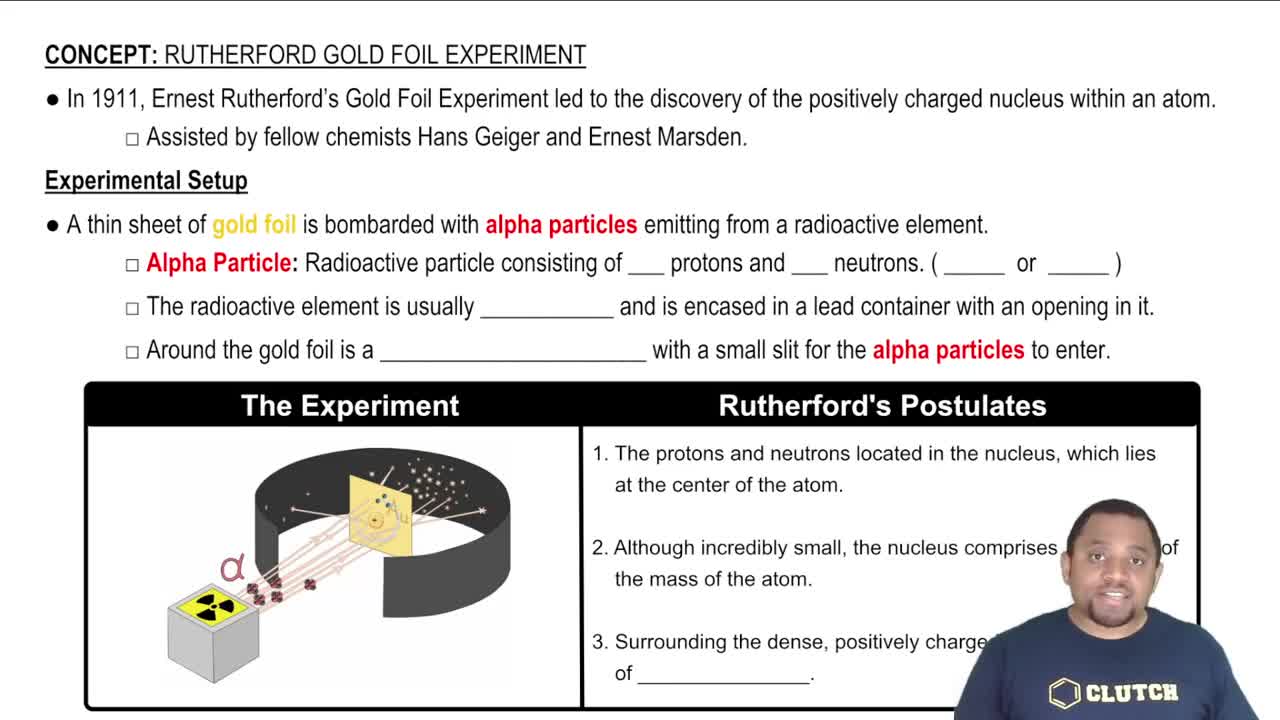Textbook Question
Use Rutherford's gold-foil experiment to answer each of the following:
c. How did he use the results to propose a model of the atom?
 Verified step by step guidance
Verified step by step guidance Verified video answer for a similar problem:
Verified video answer for a similar problem:



 4:22m
4:22mMaster Rutherford Gold Foil Oil Experiment with a bite sized video explanation from Jules
Start learning